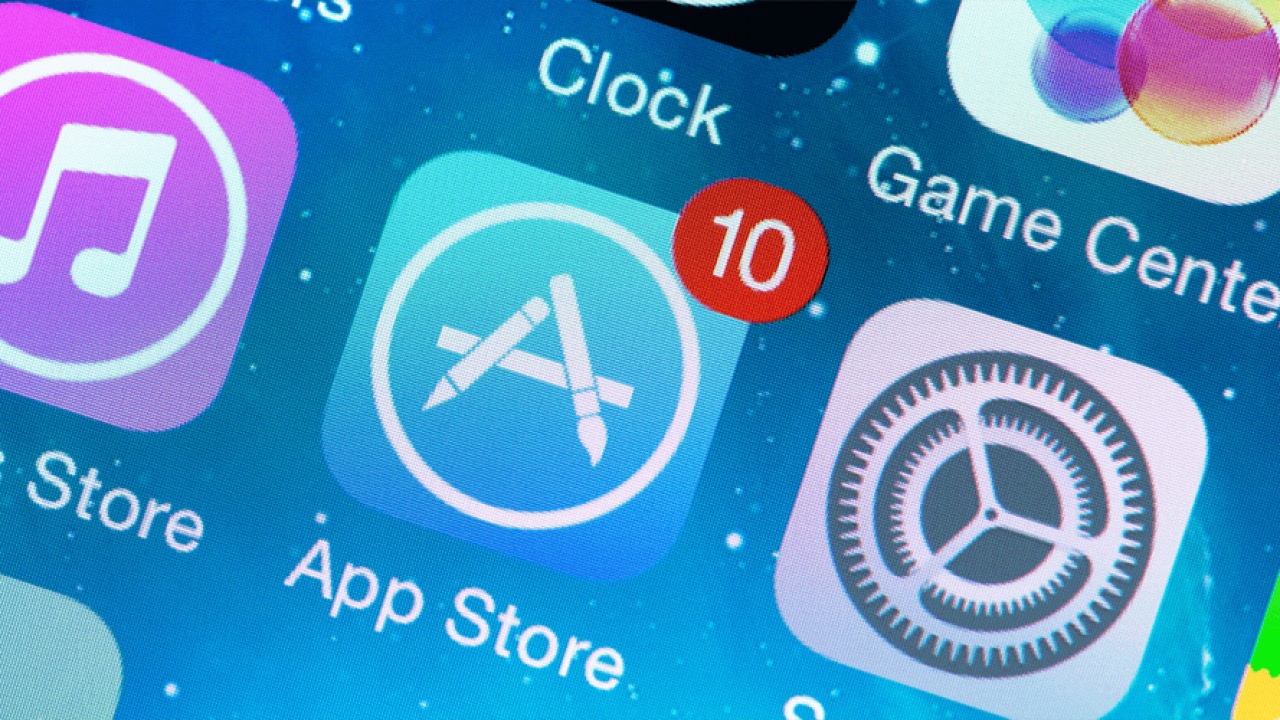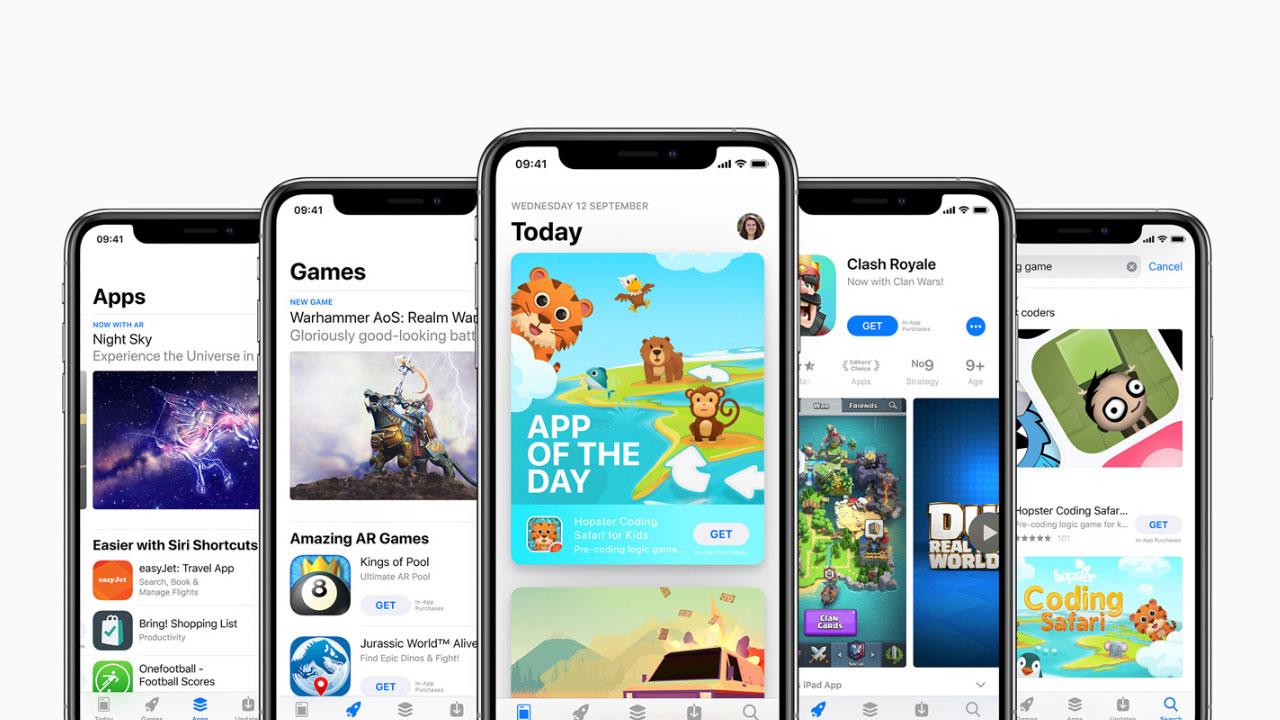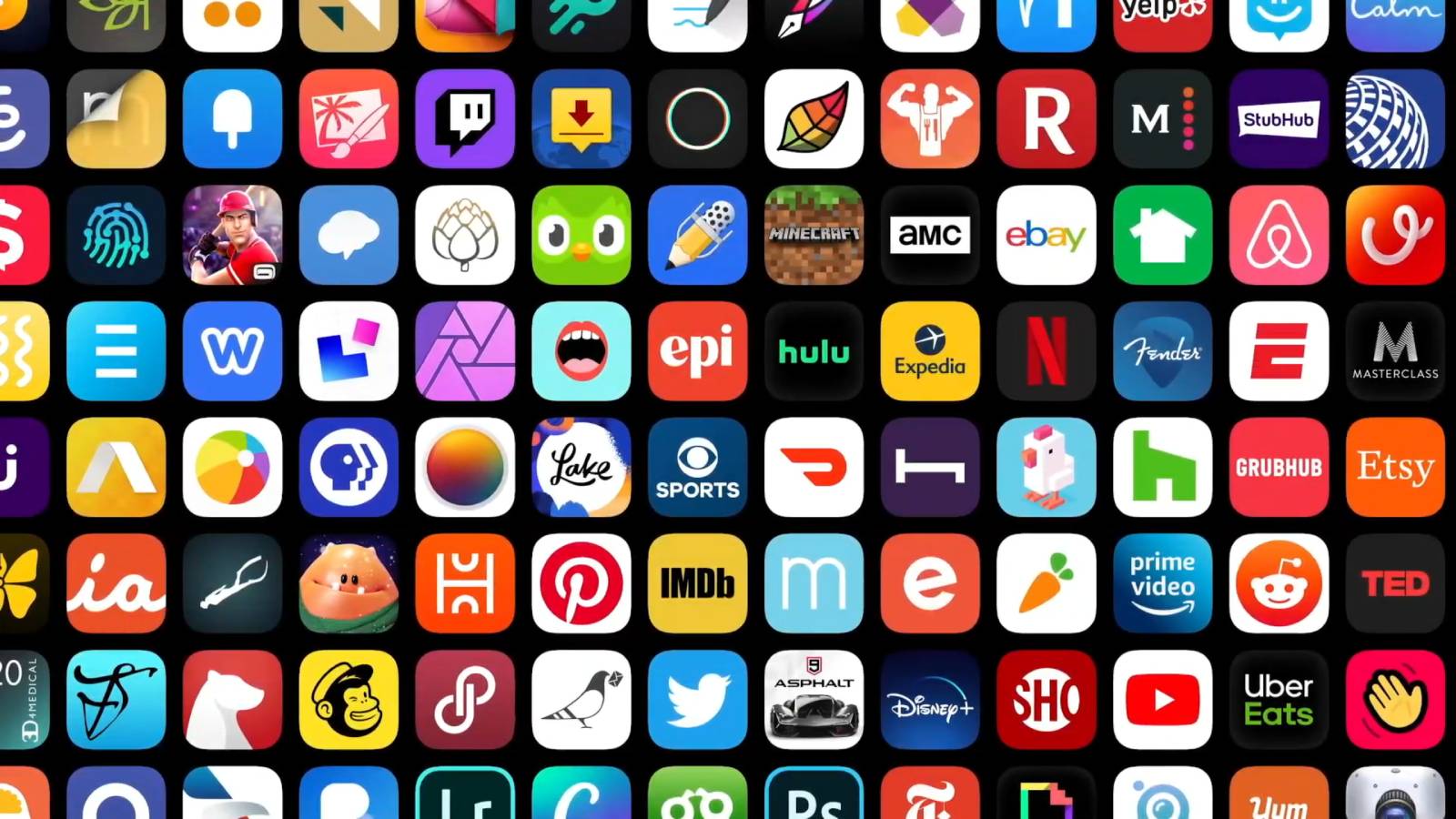12 years of the App Store: democratizing software under Apple's rigid rules
The App Store at 12: safer software, persistent problems

While the iPhone was released back in 2007, it wasn’t until the App Store launched on July 10, 2008, that Apple’s phones took the strongest step toward the devices they’d inevitably become.
The App Store heralded a new age of smartphones wherein functionality was funneled through a gateway monitored by the device maker itself, rather than installed from a phone carrier’s app catalog or directly downloaded by the user. Apple’s regulations and requirements, though infamously opaque to this day, still cleaned out enough fraudulent and poor-quality apps that it raised the bar for software across the smartphone industry.
Other app stores followed in its wake – first the Android Market (now Google Play store) launching alongside the HTC Dream in September 2008, then BlackBerry’s App World in April 2009, and Windows Marketplace for Mobile in October 2009. Ultimately, the App Store helped pave the way for third-party apps (and services provided through those apps) to dominate the iPhone, and phones in general.
The App Store has a complex legacy. Apple’s strict regulation of what it did and didn’t let into its app ecosystem earned it descriptions as a ‘walled garden,’ and Android fans decry the lower number of apps on the App Store resulting from the additional hoops developers must jump through. And it’s no secret that some developers have chafed at the 30% of in-app purchases tithed to Apple, most recently by Basecamp’s email app Hey.
For better or worse, smartphones wouldn’t be what they are today without the App Store. Here’s what the mobile marketplace accomplished, and the challenges facing it in the future.
The App Store’s first 12 years: streamlining, promoting, democratizing
Where users had previously either dealt with the apps that came pre-loaded on their phone, got additional apps through a rudimentary carrier-branded digital catalog, or risked downloading or installing directly to their device, the App Store centralized where they could be found and downloaded. Naturally, this was a big win for consumers.
“People trust Apple in a way that they didn't trust the small shareware payment processors of the 90s and early 2000s,” said James Thomson, founder of TLA Systems and developer of the iOS app PCalc – which was among the first 500 apps that launched with the App Store.
Get daily insight, inspiration and deals in your inbox
Sign up for breaking news, reviews, opinion, top tech deals, and more.
“Apple made it feasible to sell digital downloads of apps to people who weren't technically savvy, and broadened the market considerably.”
By extension, it also centralized an easy-to-find portal where developers could place and promote their apps. No more advertising or courting press to grab consumer attention and direct them to your website or other third-party downloading site: the Apple brand lent legitimacy, and iPhone owners already had the App Store pre-loaded on their phones. This effectively leveled the playing field between bigger and smaller development teams.
Further, the App Store handled all the digital infrastructure and financial nitty gritty that appmakers big and small don’t have to deal with when they sell through the App Store. While there’s more to it than just putting your app on the store and getting paid each month, Thomson explained, it's still much simpler than the old days of selling software directly to consumers.
“For a while we did both, and the vast majority of people chose to purchase via the App Store,” Thomson said.
Ultimately, the App Store streamlined getting apps online and in front of users, Jordan Morgan, senior software engineer at Buffer, told TechRadar.
“It’s democratized software development,” Morgan said. “Getting your app in front of faces is something we largely take for granted now, but it wasn’t always that easy. From relying on publishers to hoping for press, there wasn’t a focal point where most consumers went to buy things.”
While getting into the App Store was at first a de facto endorsement given how few initially made it into the walled garden, as the store grew it began curating apps to recommend, especially for its vaunted Editor’s Choice and later ‘Apps We Love’ sections.
“Before there was editorial content on the store, it was much harder for a smaller app to get visibility if they weren’t on one of the top chart list,” Kaya Thomas, senior iOS engineer for the Calm app and founder of WeReadTooApp, told TechRadar. “Now, with the curated lists and stories that the editorial team does there is more opportunity for all sorts of apps and developers to gain visibility.”

The App Store now: app success, price chafing, and review opaqueness
As the App Store has aged, the number of apps on it has grown from a mere 500 when it launched in 2008, per Engadget, to 1.85 million in Q1 2020, according to Statista. That’s led to an understandable problem of glut: there are so many apps that any new ones launching each week can struggle to get noticed – especially if they don’t end up in the coveted Editor’s Choice spotlight.
At least the App Store didn’t top 5 million apps in 2020, as intelligence firm Sensor Tower estimated back in 2016.
But as the app ecosystem has settled, the conditions of the App Store have come into question. The App Store review process for apps has been infamously unclear, with developers submitting new apps or updates, getting rejected, and examining which rules they violated to get their apps passed upon resubmission.
It’s such a persistent problem that ‘How to ensure your apps pass review’ remains a popular panel topic at developer shows, including even from Phillip Shoemaker, former head of the Apple Store:
Developers also continue to grate against Apple’s policy of taking a 30% cut of sales for in-app purchases (notably in free-to-play games), apps with an upfront fee, and apps that charge users a subscription fee. In the latter’s case, Apple reduces its cut to 15% of user subscriptions longer than a year.
Apple’s cut of app revenue is at the center of the latest controversy surrounding the email app Hey, made by longtime App Store-using company Basecamp. The tech giant took Hey off the App Store for reportedly violating its policy of enabling an in-app purchase option – the email service has a $99 annual fee – that was eventually settled with a new version of the app that offered 14-day trial accounts, thus fulfilling Apple’s arbitrary App Store requirements, per The Verge.
It’s understandable why Apple would put up a fight for the revenue it collects from apps. The corporation announced that the App Store facilitated $519 billion in billings and sales during 2019, under 15 percent of which – somewhere around $77 billion – going to the company, according to an Apple blog post.
While some developers see the revenue tithe as a cost of doing business, others chafe under it. In the twelve years since the App Store has been open, Apple has barely budged on its rates, aside from reducing its take to 15% for subscribers of over a year.
This, of course, incentivizes conversion to subscription models whether developers or users desire it, Ellen Shapiro, Mobile Engineer for Apollo GraphQL’s iOS SDK, told TechRadar. But the bigger issue is the weird line between digital in-app purchases, which require using Apple’s IAP, and physical products, which allow you to use your own payment processor (like Stripe) which has a much lower cut.
“The fact that you can’t even give people the option to choose which payment method they want to use or even tell them how to subscribe if you don’t want to use Apple’s system is pretty obnoxious,” Shapiro said.
Developers would prefer to give Apple a smaller cut, but nobody’s expecting the tech giant to change its rates. Rather, their frustration with the 30% drive may align with whether their software makes money on other platforms, too – which could make Apple’s cut feel more absurd in comparison.
“For some developers who only have an iOS app for their product and gain all their customer base through the App Store, using Apple’s [in-app purchases] makes more sense & they may not be as concerned with the 30%,” said Kaya Thomas. “On the other hand if your product is available on various platforms and most of your customers aren’t coming through the App Store it makes sense why you would feel forced to use IAP or frustrated with the 30%.”

The App Store’s future: universality and its challenges
What’s next for the App Store? There’s always the possibility that Apple will address the above frustrations, but there are other challenges ahead of it – as well as promising territory.
The biggest obstacle might be one of the App Store’s own making, though developers aren’t shirking their own responsibility: after the software market opened, teams responded to steep competition by dropping prices in a widely-acknowledged ‘race to the bottom.’
“Before the App Store and the iPhone came along, PCalc was $20, and I reduced the price to what I felt was the lowest I could go,” Thomson said. “Now, PCalc's $10 price is seen as the premium end of the market, and people balk at paying even a dollar for an app, preferring free apps with all the tracking, adverts, and microtransactions they bring.”
Developers have begged Apple for an upgrade pricing scheme for years so customers can pay a reduced rate for a new version of the same app. The tech giant hasn’t complied. Apple SVP Phillip Schiller called upgrade pricing “a model from the shrink-wrapped software days” in a 2017 interview with Gadget 360, cited its overcomplexity, and assured that consumers preferred the subscription model that the App Store has today.
But the effects of this choice – charge upfront or a regular subscription – will run into another problem that is, ironically, enabled by a minor software revolution: once Macs fully integrate Apple-built silicon over the next two years (as announced at WWDC 2020), consumers will expect to pay once for apps that work across the entire Apple ecosystem.
The ‘race to the bottom’ has trained users to expect a $0.99 app to work everywhere, resulting in an even longer road to profitability for developers who aren’t using subscriptions, in Morgan’s opinion.
“I make apps I want to use and how I would like to pay for them, and the writing on the wall is clear for developers like me; the days of paid up front are over,” Morgan said.
Of course, users will appreciate the unification’s effect: buying an app once to use across all Apple devices. That’s not guaranteed, as developers will have the option to sequester app purchases between iPhones/iPads and Macs, say, to account for the additional features or services available on primary computing platforms. But it’s hard to see users understanding why some apps are buy-one-get-all and not others.
Apple has already pledged to support app developers in their transition to the new Apple silicon-powered Macs, including supplying them with the already-coveted Developer Transition Kit (a Mac mini powered by an iPad Pro A12Z chipset), but it’s unclear whether policy changes will follow hardware. While plenty has changed in what Apple has allowed on the App Store over the last 12 years, some developers are still seeking the things they’ve been asking for since day one.
- Everything we know so far about the iPhone 12
David is now a mobile reporter at Cnet. Formerly Mobile Editor, US for TechRadar, he covered phones, tablets, and wearables. He still thinks the iPhone 4 is the best-looking smartphone ever made. He's most interested in technology, gaming and culture – and where they overlap and change our lives. His current beat explores how our on-the-go existence is affected by new gadgets, carrier coverage expansions, and corporate strategy shifts.
